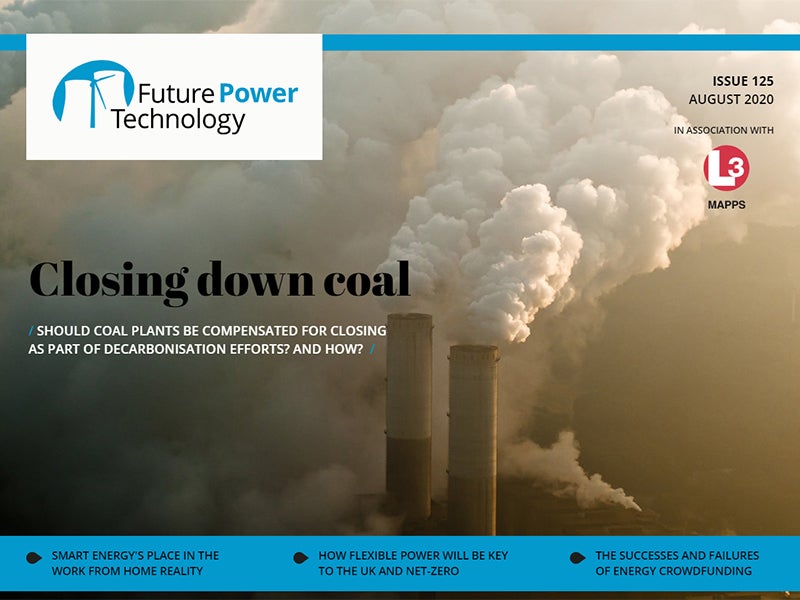
As working from home becomes much more a part of everyday life, energy customers will be increasingly looking for solutions to monitor and control their home energy consumption. We investigate the current state of technology in the field.
Also, we learn about the IEA Bioenergy Technology Collaboration Programme, dive into a report suggesting flexible power could save the UK energy industry £40bn, and take a look at different approaches being taken around the world to compensate industry for early coal plant closures.
Finally, we speak to ZOLA Electric about energy infrastructure in Africa, profile the companies leading in EV infrastructure, hear from the Oak Ridge National Laboratory about their 3D-printed nuclear reactor core, and explore the history of crowdfunding in the energy industry.
Whether you are on a desktop, tablet or smartphone, you can read the magazine for free online, and join the conversation on Twitter.
In this issue
Smart home, smart energy control: work from home edition
As working from home becomes the new normal for many, domestic energy bills are soaring. But, Heidi Vella asks, could smart home energy management systems, such as apps and thermostats, help customers and the grid manage the shift in demand?

US Tariffs are shifting - will you react or anticipate?
Don’t let policy changes catch you off guard. Stay proactive with real-time data and expert analysis.
By GlobalDataCritics and collaboration: how the IEA governs bioenergy sustainability
Although classed as a renewable energy source, bioenergy has its detractors. Regardless, it continues to make a significant contribution to the global energy mix. Andrew Tunnicliffe explores the International Energy Agency Bioenergy Technology Collaboration Programme and how collaboration can help advance the sector and counter its critics.
How a ‘flexible’ power system will be key for the UK to meet net-zero targets
After enduring a difficult few months for power supply and demand, questions about the UK’s ability to meet ambitious 2050 net-zero targets have been raised. Andrew Tunnicliffe learns about future challenges, the Flexibility in Great Britain project and how a “flexible” energy system might be the answer.
Closing coal: should we be compensating the fossil fuel industry for early closures?
In May, the Dutch Government received approval from the European Commission to compensate Vattenfall for the closure of its Hemweg coal-fired plant ahead of time. Meanwhile in Germany, operators can tender compensation prices for closing early. Should coal plants be paid to close?
The realities of powering through Covid-19 in Africa, with Zola Electric
While African economies develop, diesel generators and micro-grids are propping up unreliable grids across some of the world’s most populous nations. Since 2012, ZOLA Electric has aimed to fix these problems. CEO Bill Lenihan told Matthew Farmer how this works on a good day, and how everything has changed since the onset of coronavirus.
Full charge: the EV infrastructure providers to watch
With countries emerging from lockdown, many are talking of the desire to not go back to cities choked by the fumes of gridlocked traffic. Yoana Cholteeva looks at the possibility of a rapid electric vehicle rollout, and profiles the infrastructure companies poised to make the best out of this opportunity.
Revamping nuclear reactor technology with 3D printing and AI
The Oak Ridge National Laboratory’s Transformational Challenge Reactor Program hopes to bring nuclear power into the 21st century by deploying 3D printing and AI to design and produce reactor core technology. Heidi Vella finds out more.
Clean energy crowdfunding: successes and failures
Could crowdfunding be a route to supporting innovative clean energy projects? While high-profile successes have raised the profile of the system, challenges remain for innovators across the energy sector. JP Casey investigates.
Harnessing wave power in Tasmania
While previous attempts have run into maintenance issues – having to vie with the eroding and powerful force of the very waves they are attempting to capture – Wave Swell Energy has developed an oscillating water column design that promises to turn Australia’s coastline into one giant energy source. Scarlett Evans talks to co-founder Dr Tom Denniss.
Preview – Future Power Technology September 2020
The German Energy Agency (DENA) and its subsidiary Global Alliance Powerfuels has announced plans to dramatically increase its reliance on hydrogen power, launching a 38-step programme to improve its hydrogen infrastructure across the country. We investigate.
Also, we look at how hydrogen could turn Orkney into an energy exporter, learn about Orsted and Equinor’s giant offshore wind project, and speak to Siemens’ new Energy Solutions business.
Finally, we find out about the UK’s battery gigafactory, dig into the details of Viking’s Shetland wind farm, and look at the most promising projects in US nuclear.



